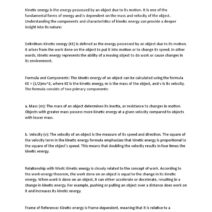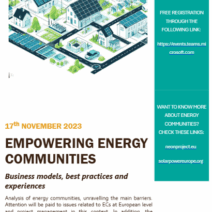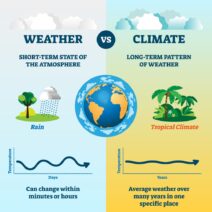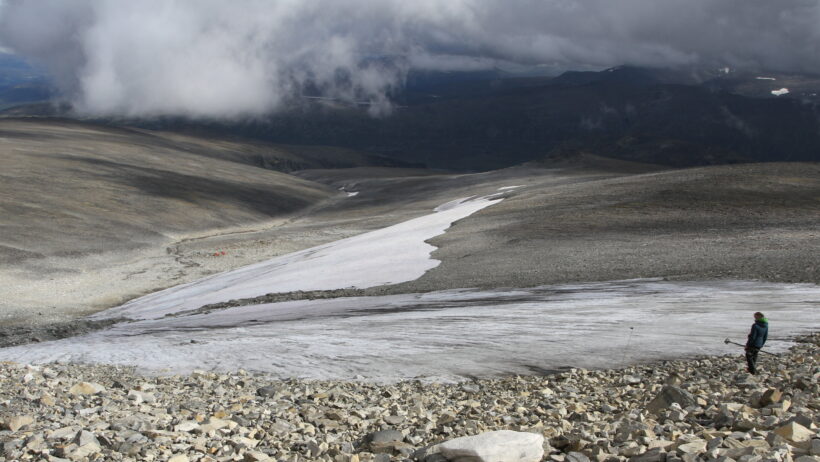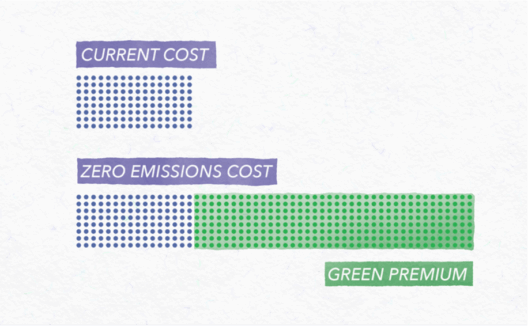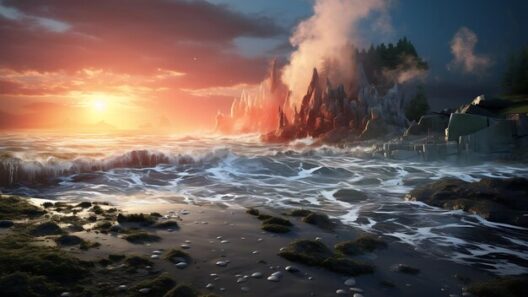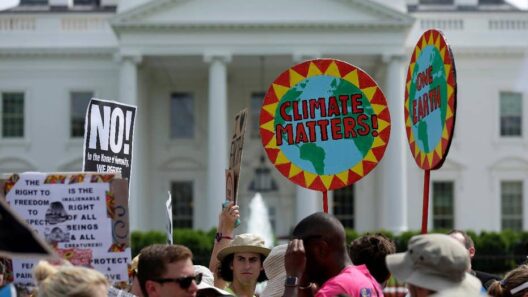Global warming, often perceived as a straightforward increase in earth’s temperatures, possesses a paradoxical dimension: it may paradoxically precipitate an ice age. This concept, while counterintuitive, is founded in the intricate interplay between various climatic systems and their feedback mechanisms. The exploration of this phenomena demands an understanding of numerous interlinked factors, from the cryosphere’s dynamics to oceanic currents and atmospheric conditions.
To grasp how global warming can induce an ice age, one must first appreciate the Earth’s climatic rhythms. Historically, the planet has oscillated between warming and cooling phases, often triggered by changes in solar radiation, volcanic activity, and atmospheric composition. For instance, the Milankovitch cycles describe the periodic variations in the Earth’s orbit and axial tilt, influencing long-term climate patterns. These oscillations can lead to the expansion of ice sheets and subsequent glaciation periods.
Now, consider the scenario of global warming resulting from anthropogenic emissions. As greenhouse gases accumulate in the atmosphere, they enhance the greenhouse effect, leading to higher surface temperatures. Simultaneously, this warming can disrupt established weather patterns and ocean currents, particularly affecting the North Atlantic region.
One pivotal component is the Atlantic Meridional Overturning Circulation (AMOC), a vital ocean current system that regulates climate. This current transports warm, salty water from the tropics to the North Atlantic, where it cools and sinks, completing a global conveyor belt that influences weather patterns across the globe. As the Arctic warms, significant freshwater from melting glaciers and ice caps slows or even halts this circulation. Such an alteration has profound consequences; it can lead to regional cooling despite overall global temperature increases.
Another critical factor in this complex equation is the feedback loop associated with ice and albedo. The albedo effect refers to the reflectivity of Earth’s surface. Ice and snow reflect sunlight, while darker ocean or land surfaces absorb it. As temperatures rise, ice diminishes, reducing albedo and leading to more absorption of solar radiation. However, if the cooling effect from altered ocean currents supersedes the warming induced by greenhouse gases, rapid and substantial glaciation could begin in some regions, especially in Northern Europe and North America.
Additionally, volcanic eruptions and their relationship with climate shift should not be overlooked. The release of volcanic ash and sulfur dioxide into the atmosphere can create a short-term cooling effect, counterbalancing some of the warming effects from greenhouse gases. If significant volcanic activity coincides with ongoing global warming and altered oceanic patterns, the conditions may lead to an abrupt climatic shift. Historical instances, such as the “Year Without a Summer” in 1816, underscore how volcanic activity can drastically modify weather patterns and temperatures.
Furthermore, biogeochemical cycles are vital to understanding climate interactions. Forests, oceans, and soils all play roles in sequestering carbon. Deforestation and land use changes not only increase atmospheric CO2 levels but can also lead to a cascade of changes in hydrological cycles and local climates. This interplay can create microclimates that may significantly differ from the anticipated warming trend, potentially leading to localized cooling effects.
It is also essential to consider the role of human intervention and the potential for geoengineering as a response to climate change. While some propose strategies for mitigating global warming, such as injecting aerosols into the atmosphere to reflect sunlight, these methods carry risks of unintended consequences. Such interventions could inadvertently disrupt existing atmospheric and oceanic systems, creating scenarios that lead to unexpected glacial activities.
Looking to the past offers valuable insights. The Younger Dryas, a period of abrupt cooling approximately 12,900 to 11,700 years ago, occurred in the midst of rising temperatures following the last Ice Age. Some scientists attribute this extreme cooling to the influx of freshwater into the North Atlantic, disrupting the AMOC and allowing glacial conditions to return temporarily. This historical precedent highlights the delicate balance within Earth’s climate system, where minor shifts can precipitate monumental changes.
Moreover, the interplay between Arctic sea ice and global weather patterns illustrates another facet of this phenomenon. As global temperatures rise, Arctic ice diminishes, destabilizing traditional weather patterns. This destabilization can lead to extreme weather events, such as polar vortex shifts, that contribute to colder than expected winter conditions in broader regions, further complicating the warming narrative.
In closing, while it may initially seem paradoxical, global warming possesses the potential to instigate an ice age under specific conditions. This possibility stems from complex feedback mechanisms involving oceanic currents, atmospheric changes, and the delicate balance of Earth’s climate systems. As we navigate the uncertainties of our warming world, it is imperative to acknowledge the interconnectivity of these factors and retain a vigilant perspective on climate dynamics. Understanding the nuances surrounding climate change introspects a broader narrative: human actions can exert monumental influence over the environment, with effects that ripple through both short and long-term climatic scales.
